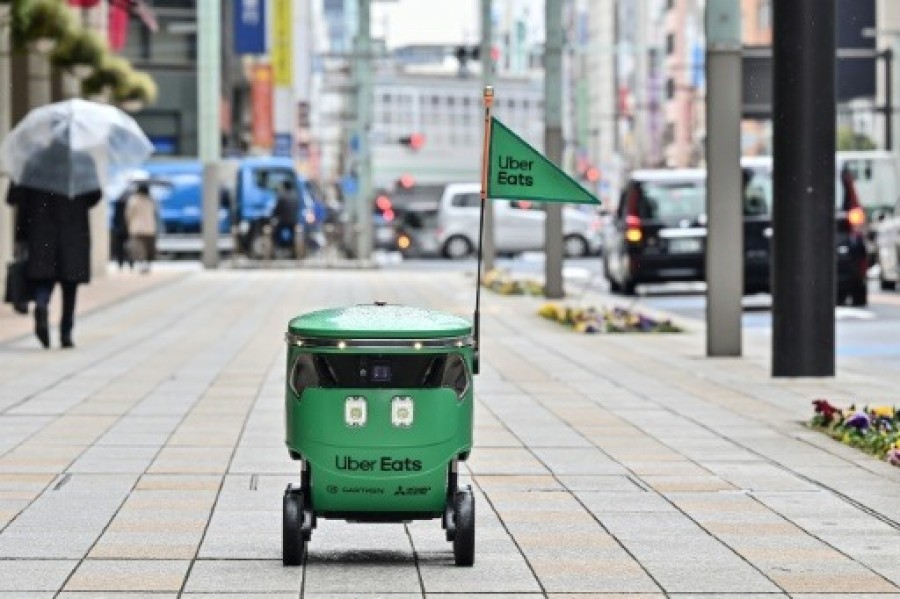Uber Eats starts robot deliveries in Tokyo

"Caution: robot!" chirps the green self-driving delivery vehicle as it trundles down the street to a pork cutlet restaurant in Tokyo to pick up a meal ordered on Uber Eats.
Starting Wednesday, robot deliveries will be offered in a small area of the city by the U.S.-based food app, which hopes to eventually roll out the service more widely in Japan.
The country, facing growing labor shortages, changed traffic laws last year to allow delivery robots on public streets, and other companies including Panasonic are also trialling cute new machines to transport goods.
Uber Eats' boxy robots have square headlights for eyes and three wheels on each side to navigate kerbs as they calculate routes on their own, using sensors to avoid pedestrians and other obstacles.
Moving at up to 5.4 kilometers an hour and with flashing lights around the lid, there's a human operator on standby in case of trouble. Like self-driving delivery services launched by the company in
"Going all the way to the office floor, to the exact apartment... could be useful in somewhere like high-rise Tokyo," said Oo, market operations director at Uber Eats Japan.
The service could also one day come to rural areas, where many residents are elderly and drivers are scarce, he added.
Current drivers "do not need to worry", Oo said, because "even in five, 10 years' time, there will always be work for the human delivery partners on the platform".
Uber Eats and similar apps faced strikes last month, and rideshare giant Uber has long been criticized for dodging minimum wage and holiday pay rules by arguing its workers are not employees but independent contractors.
The Uber Eats robots, developed with Mitsubishi Electric and U.S. start-up Cartken, will deliver food from just a few restaurants in the busy Nihonbashi district at first.
Users cannot choose robot delivery, and if it is selected for them they can accept or decline the offer.
At a demonstration on Tuesday, the robot nearly collided with a pedestrian, but also attracted lots of attention.
It's "so cute, so eye-catching", said passer-by Akemi Hayakawa. "I thought it might bump into people's feet, but people give way to it," the 60-year-old said.
"Japan has an aging, dwindling population, with a serious labour shortage. So this is a very good idea for Japan too."
Previous Story
- Domino's signs deal with Uber Eats in a...
- Trukker raises $100m to accelerate growth ahead of...
- Uber signs deal for Australian gig worker rights
- Careem adds Covid-19 vaccination facts for UAE customers
- Uber Intercity allows persons to visit across Bangladesh
- Uber enlists 5,000 vehicles following BRTA order
- Uber sees recovery in ride-hailing business as Covid-19...
- Uber launches reminder and push notification